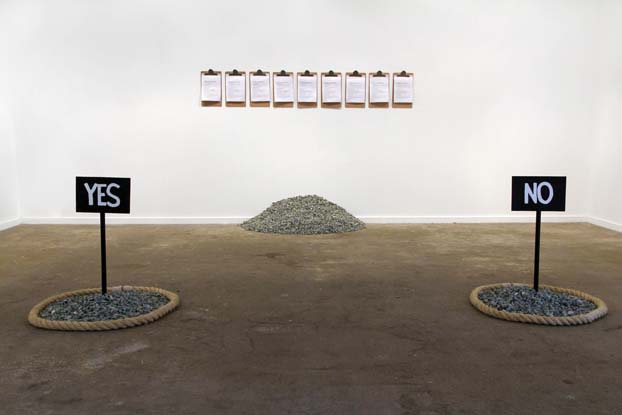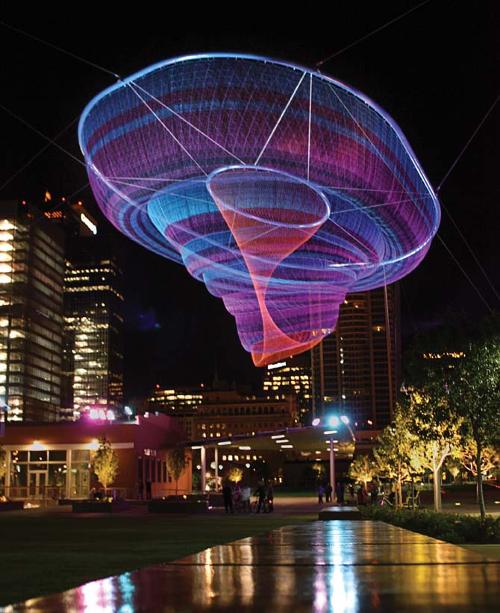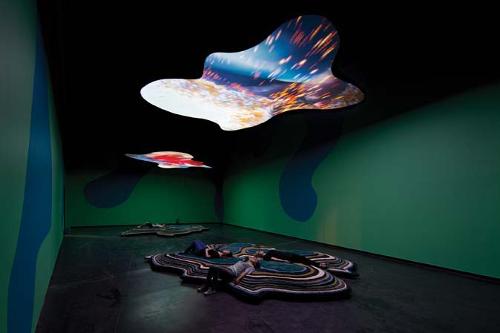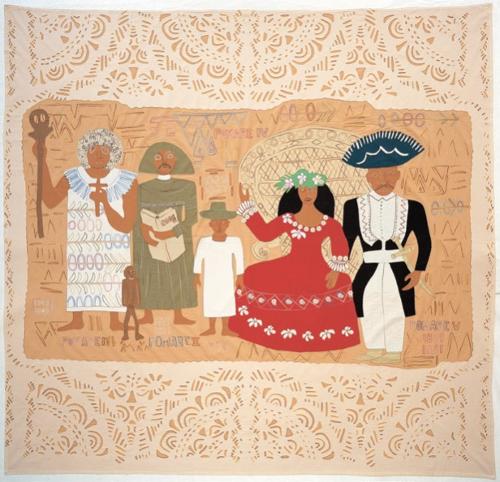
King Sisyphus was doomed for all eternity with the task of pushing a boulder up a mountain, only for it to roll down for him to begin the act all over again. Albert Camus used Sisyphus as an example for the ultimate absurd hero - toiling away at a meaningless task for all eternity. In Untitled (Survey with Stones) (2011), Dara Gill asks his audience to move a pile of stones, although individually and purposefully. Unlike Sisyphus, the moving of the rocks is not an arbitrary act, they are moved in response to a questionnaire Gill devised from the book Stress Control: How to cope with Anxiety by Vernon Coleman, a self-publishing self help guru of sorts. The active audience member is asked to answer a series of questions, such as "Do you wonder whether it's all worthwhile? Do you feel life has passed you by?" and “Do you feel that you could have done something more with your life?” through placing a stone in a corresponding Yes or No pile.
It’s a personal and reflective questionnaire as there is no way to decipher the individual results at the end of the exhibition. All that will remain are two smaller piles of stones instead of one larger pile. Gill provides the arena for us to question ourselves and to explore the futility and ceaseless toil of existence, and as Camus questions what goes through Sisyphus’s mind as he walks down the mountain to begin his task one more time, the anxiety level of the audience participant slowly mounts as each question is asked and the stone is dropped.
On the sidelines of Untitled (Survey with Stones) is a constant reminder of the relentless cycle of life, that two die and four are born every second. NOW Counter (Current Birthrate/Deathrate Four Births Per Second, Two Deaths Per Second) (2011) flashes the word NOW on two screens, repeatedly and incessantly. It never stops or slows down, and even though it’s telling me that somewhere life’s toil has begun and somewhere else life’s labour has ended I also see the flashing of the word NOW as a constant reminder that now is the time to take action and make a change. To take this affirmative action and a step forward in the right direction Gill provides us with the ultimate tool- the To Do List (2011). Exactly as the title suggests, the third element in Gills In Action, Inaction installation is a take home device to help you list all your actions to bring you that step closer to having a purposeful life. Because if we fill the pad with actions and to dos and complete them all, won’t that count as living life to the fullest? As Camus identifies in his analysis of the absurdity of life – what counts is not the best living, but the most living. Through providing the handy little notepad, the cycle of futility and anxiety comes full circle. The anxiety the audience member developed from their base level of calmness on entering the temperature controlled, quiet and levelling environment of the gallery, which grew to excessive levels from the participatory act of the moving of stones and realisation that life is filled with arbitrary acts, reverted to calmness once again from the placebo effect created from the knowledge that it is not too late to take action and change it all. An imitation of the cycle of life. Camus says that acknowledging the truth will conquer it, no matter how absurd the truth may be. He concludes his essay on the Myth of Sisyphus by stating that “[t] he struggle itself...is enough to fill a man’s heart. One must imagine Sisyphus happy”. Gill’s work, through making the audience question themselves, and ultimately accept and acknowledge their situation, brings them one step closer to conquering the futility of it.












